This article was medically reviewed by Eric Christensen, DPT. Eric Christensen is a Physical Therapist based in Chandler, Arizona. With over a decade of experience, Eric works in both orthopedic and neurological fields and specializes in custom orthotic prescription and casting, vestibular reprogramming, and manual therapy. He holds a Bachelor’s degree in Exercise Science with a focus in Sports Medicine from Colorado State University and a Doctor of Physical Therapy from Regis University. In practice, Eric takes a developmental approach to rehabilitation utilizing the Selective Functional Movement Assessment. He uses functional movement patterning and manual therapy to return patients to prior levels of function.
There are 15 references cited in this article, which can be found at the bottom of the page.
wikiHow marks an article as reader-approved once it receives enough positive feedback. In this case, 80% of readers who voted found the article helpful, earning it our reader-approved status.
This article has been viewed 396,792 times.
Total knee replacement surgery is a major procedure that replaces one or both knees. Recovery can be tough, but the surgery almost always alleviates the pain associated with arthritis or injuries. To recover smoothly, first make sure your home is safe for your recovery. If you're feeling anxious leading up to the surgery, talk to the doctor or a counselor to help with your fears. Once you get home after the surgery, keep your wound clean, complete your physical therapy assignments, and gradually get back to your daily activities. Your life should be back to normal within 4-6 weeks.
Steps
Completing Home Preparations
-
1Arrange for someone to help you at home for at least 2 weeks. For the first 2 weeks after the surgery, you won’t be able to do many household tasks. You’ll need someone to do the shopping, make meals, clean, and assist you if you need help. If you live with family, let everyone know that you’ll need help while you recover. If you live alone, make arrangements with someone to stay with you while you recover.[1]
- The person doesn’t have to stay in your home 24 hours a day for your full recovery. But make sure they can stay with you at least during the day when you'll need help moving around and getting meals.
- If you don’t have a support network, inform your doctor. They may be able to arrange a home care worker while you recover. They may also suggest a rehab center.
- You also won’t be able to drive for 4-6 weeks after the surgery. If you drive regularly, arrange for someone to drive you to work, the store, and other places you have to go.
-
2Move furniture so you can get around your home on a walker. Getting around will be tough for about 2 weeks, so make sure you have plenty of room in your home. Move your furniture around to create large walking spaces. Also move anything you may trip on, like throw rugs or wires. This is all important for your safety.[2]
- Do a trial run and try walking around your home with a walker or crutches. Find any spots that are difficult to maneuver around and move items around to fix that.
- You may even find it easier to use a wheelchair for a few days after surgery, especially if you had both knees replaced at the same time. Consult your doctor about renting one, and make room for it in your home.
Advertisement -
3Create a living space on the main floor to avoid climbing stairs. Trying to climb stairs for the first few days after your surgery will be dangerous. If possible, stay on the main floor until you can climb stairs comfortably. Bring pillows and blankets down and sleep on the couch. Have food, water, and a bathroom nearby so you can reach them easily.[3]
- Alternatively, climb the stairs once to get up to your bedroom, and stay there for a few days. Make sure someone is around to help you get up the stairs.
-
4Install bars or handles around your toilet and shower. Stepping into the shower and using the toilet will be difficult for at least 2 weeks after the surgery. If possible, install handles around your bathroom to help. Place one near your shower and one near the toilet. These additions will help keep your safe while you recover.[4]
- Handle kits are available from hardware stores. Most attach to the wall with screws.
- Make sure these handles are secure. Test them out by pulling on them and making sure they support your weight. If one breaks while you're recovering, you could face serious injury.
- If you aren't confident in your own ability to install the handles, bring in a professional or a handy friend to do the job.
-
5Get a raised toilet seat. In addition to handles, a raised toilet seat will make using the bathroom much easier. You'll be able to stand up with less effort. Install a raised toilet seat before your surgery and use it for a few days before so you're used to it by the time you get home.[5]
- Modified toilet seats like these are available from medical supply stores.
- Hospitals sometimes give you temporary equipment like this to help with your recovery. Speak with your doctor about renting one. This may be covered by your insurance plan.
-
6Plan to miss at least 1 week of work. The amount of work you'll miss depends on what you do for a living. People who work jobs that aren't physically demanding often return within a week. If you work a physical job like construction or firefighting, then you'll need more recovery time. Plan ahead and request time off in advance of your surgery. Monitor your recovery and consider what your job requires. Return when you feel like you can do your job safely.[6]
- Talk to your doctor about what you do and when you'll be able to return to work. Your doctor can give you the best recommendation.
- Remember that commuting to work will still be difficult. Try to arrange for someone to drive you for at least the first week of your return.
- If you can't take off a lot of time at work for financial reasons, speak with your boss about coming in and doing reduced work. For example, you can still speak with customers and fill out paperwork, but can't do any heavy lifting. This way you can still get paid without risking your recovery.
-
7Follow the pre-operative procedure your doctor gives you. All operations have a list of procedures you have to follow. Your surgeon will go over all of these leading up to the surgery. Follow all of the instructions so your surgery proceeds as well as possible.[7]
- Common instructions are no eating or drinking for a few hours before the surgery, cleaning the surgical area, not wearing makeup, and leaving valuable items at home.
- There are also pre-surgical tests like x-rays, blood tests, and EKGs. Do all of these tests in the days leading up to the surgery.
Managing Your Anxiety
-
1Learn what to expect from the surgery. Fear of the unknown is a big cause for anxiety before surgery. Learning about the surgery can make you feel better. Listen to the doctors and surgeon when they explain the procedure. Ask them any questions you may have to get a clear picture of the surgery and what to expect.[8]
- If you’re squeamish or don’t like hearing about surgeries, investigating the procedure could backfire. Know your own limits and don’t learn more than you’d want to know.
- Also be careful what sources you use. Look for reputable medical articles, rather than articles that focus on horror stories and worst-case-scenarios.
-
2Accept that the surgery is meant to help you. While it may seem like a traumatic event, a knee replacement will improve your quality of life. Your daily pain should decrease and your mobility will increase. If you find yourself feeling anxious or afraid of the surgery, remember that it’s overall for the best. It will be difficult for a short amount of time, but your life will improve.
-
3Tell your doctor and surgeon about your anxiety. Don’t hide your anxiety. This is normal before surgery. Communicate with your doctor and let them know you’re feeling anxious. They’ve probably seen this many times before and can recommend ways to deal with it.[9]
- Surgeons are usually trained to spot anxiety in their patients, so even if you don't tell them, they'll probably see that you're nervous. It's better to just let it out and talk through your fears.
-
4Attend pre-surgical counseling if you feel very nervous. Professional counseling can help you overcome your anxiety. Some hospitals have therapists on staff to help patients dealing with this issue. If you regularly see a therapist of your own, schedule an appointment before the surgery to talk through your anxieties.[10]
- See if the hospital has a support group or counselor available to talk to. Take advantage of these resources to help your anxiety.
- There are also online message boards and support groups. Do an internet search for “knee surgery support groups” to see if there is an online group you could join for comfort.
Managing the Hospital Stay
-
1Plan for a 1 to 4 day hospital stay. The hospital stay for a bilateral knee (both knees) replacement is longer than for a single knee replacement, which may sometimes be done as an outpatient procedure. However, in most cases, you will spend 1 day or longer in the hospital. You may need to stay longer if you haven’t met your post-surgery milestones yet.[11]
- Make arrangements for someone to take care of your children, pets, and home while you’re in the hospital.
- Your doctor might recommend a rehab facility after leaving the hospital. Speak with your doctor to see if this is the right option for you.
-
2Expect pain and disorientation when you wake up from surgery. After surgery, you will wake up in a hospital room. As the anesthesia wears off, you’ll feel weak and disoriented. Doctors usually keep you on a regimen of painkillers after surgery to help with the pain, but you still may feel some. These are all normal parts of recovering from surgery.
- Don’t expect many visitors on the day of your surgery. You’ll probably be too weak to see many people.
- Nausea is a common side effect of anesthesia. Don’t be surprised if you vomit a few times in the day after your surgery. If you know that you have issues with nausea from anesthesia due to a past experience, make sure to tell the anesthesiologist. They can give you medication to help ease the nausea after your surgery.
-
3Move your feet and ankles to keep your circulation up. A little movement after surgery is a good thing. It prevents your muscles from tightening up and maintains circulation in your legs. As soon as you can, start wiggling your toes and making circular motions with your ankles. Even this tiny motion helps get your recovery going.[12]
- Keep your knees sedentary until the nurses tell you to start moving them. Usually, the doctor wants to let the knees heal for about a day after surgery.
- Stop moving your feet if the nurses tell you to stop.
-
4Follow the exercise instructions the nurses give you. The day after your surgery, nurses will begin getting you to move your new knee or knees if you had both replaced. This may be painful, but it’s a crucial part of recovery. First, they may start bending your knee or knees back and forth to check flexibility. Then, they’ll see if you can do this yourself. After some initial activities, they’ll help you out of bed and see if you can move around with a walker. Follow all the nurse’s instructions to start your physical recovery.[13]
- Put most of your weight on the walker when you take your first steps. Putting the weight on your legs will be too painful at this point.
- These exercises will be painful, but communicate your pain to the nurses. If something seems extremely painful and too much for you to bear, tell them and stop the exercise.
- The nurses or doctor may also tell you which motions to do at home during your recovery. Pay attention to make sure you understand. Ask for all the instructions in writing if you can’t keep track of them.
-
5Meet the milestones for a hospital discharge. After a knee replacement, the hospital won’t discharge you until you demonstrate that you can take care of yourself at home. There are a series of milestones they will test you for before discharging you. These differ from hospital to hospital, but the most common ones are: walking 100–300 feet (30–91 m) with the help of a walker, using the bathroom, getting in and out of bed by yourself, bending your knee 90 degrees, and climbing stairs.[14]
- Having the pain under control is another common milestone. If you’re still in pain after taking painkillers, the hospital may not discharge you.
- Usually, patients who are in good shape before surgery reach these milestones sooner. If you’re out of shape, consider exercising a bit leading up to your surgery to try and shorten your hospital stay.
Recovering at Home
-
1Keep your wounds clean and dry. The doctor will give you wound care instructions when you leave the hospital. Follow all of these to prevent infections. Usually, the doctor says to change your wound dressings every day. Carefully remove the gauze on your leg or legs. Soak them in sterile water if they’re stuck. Then dip some gauze in saline and gently wipe the wounds. Dry them with dry gauze, then re-wrap them up with sterile gauze.[15]
- Always wash your hands before and after touching the wounds.
- Never pull or rip the gauze off. If they’re stuck use water and gently work them off.
-
2Contact your doctor if you see signs of an infection. While you clean your wounds, inspect them for signs of an infection. Symptoms include redness, swelling, pus coming from the wounds, and a hot sensation around the wounds. You may also have a fever.[16]
- Call your doctor right away if you spot any signs of an infection.
-
3Take all of your medication exactly as prescribed. Common post-operation medicines are antibiotics and painkillers.[17] Follow all the doctor’s directions for taking these medications safely. Swallow a full glass of water with your medications so they work properly.[18]
- Antibiotics and painkillers may upset your stomach. Take them with a light meal to avoid stomach issues.
- Painkillers are potentially addictive. Only take them as prescribed and don’t double-up on doses.
-
4Sleep on your back after the surgery. Sleeping may be difficult after a knee replacement. Only sleep on your back to keep pressure away from your knee or knees. Any other sleeping position may be too painful.[19]
- Keep your legs straight by sleeping with a pillow under your calves. Don’t place the pillow under your knees. This will be comfortable, but it’ll make your knees bend.
- You might find it more comfortable to sleep in a reclining chair than in bed.
-
5Shower with a waterproof wrapping as soon as you feel up to it. While in the past patients were told not to shower for up to 2 weeks afterward, doctors now encourage patients to do so as soon as they feel confident enough entering the shower. Part of your post-surgery kit will include waterproof wrapping. Use these wrappings to cover your incisions and keep them dry. Then use a chair or stool so you don't have to stand while you wash yourself. Shower as normally as you can, and dry your incisions with clean gauze afterward if they got wet.[20]
- Shower with someone nearby in case you need help getting in and out. This is especially important to prevent falls.
- Check with your doctor before taking a bath. It's harder to keep your incisions dry with a full bath, so follow your doctor's guidelines.
-
6Attend all of your scheduled physical therapy appointments. Physical therapy is one of the most important parts of knee replacement recovery.[21] You will probably have appointments once or twice per week while you recover. Stay up on these appointments and don’t cancel them unless it’s an emergency.[22]
- Physical therapy will be painful in the beginning, but stay strong. It’s part of the healing process.
- Also do your work outside of physical therapy. Do any exercises that the therapist tells you to. This will speed your recovery.
-
7Wear compression stockings to prevent blood clots. There is always a risk of blood clots after major surgery, especially in the legs. Reduce your risk of developing clots with a pair of compression stockings. They are available from medical supply stores or online.[23]
- Ask your doctor for a recommendation on the type of compression stockings to use.
- Staying active is another way to avoid blood clots. Move around as much as you can, even if it isn't much. While you're sitting down, move your feet and toes to keep circulation up.
- The symptoms of a blood clot are pain and swelling in your legs below the knee, and skin discoloration. Contact your doctor right away if you notice these signs.
-
8Begin resuming your daily activities after 2 weeks if you can. Staying mobile is an important part of recovery. While a full recovery can take 4-6 months, get back to your daily life as soon as possible.[24] Start with small tasks like walking around your home, cooking, and cleaning. Then begin leaving your home and doing some shopping or going for a light walk in the neighborhood.[25]
- Don’t climb on anything until you’re fully healed.
- Speak with your doctor if any activities cause you a lot of pain.
- If you’re still on painkillers, avoid operating cars or other motor vehicles until you’re no longer taking them. Make sure you’re able to press down both pedals before driving.
Expert Q&A
-
QuestionHow can I make my knees stronger?
 Laila AjaniLaila Ajani is a Fitness Trainer and founder of Push Personal Fitness, a personal training organization based in the San Francisco Bay Area. Laila has expertise in competitive athletics (gymnastics, powerlifting, and tennis), personal training, distance running, and Olympic lifting. Laila is certified by the National Strength & Conditioning Association (NSCA), USA Powerlifting (USAPL), and she is a Corrective Exercise Specialist (CES).
Laila AjaniLaila Ajani is a Fitness Trainer and founder of Push Personal Fitness, a personal training organization based in the San Francisco Bay Area. Laila has expertise in competitive athletics (gymnastics, powerlifting, and tennis), personal training, distance running, and Olympic lifting. Laila is certified by the National Strength & Conditioning Association (NSCA), USA Powerlifting (USAPL), and she is a Corrective Exercise Specialist (CES).
Fitness Trainer Use exercise to make your calves, quads, and hamstrings stronger. It's not possible to make your knees themselves stronger, but you can make the muscles surrounding your knees better at supporting you. When you build the muscles around your knees, the bone gets denser, which helps your knees handle your weight easier.
Use exercise to make your calves, quads, and hamstrings stronger. It's not possible to make your knees themselves stronger, but you can make the muscles surrounding your knees better at supporting you. When you build the muscles around your knees, the bone gets denser, which helps your knees handle your weight easier. -
QuestionWhat can I do to get relief from knee pain after the surgery?
 Eric Christensen, DPTEric Christensen is a Physical Therapist based in Chandler, Arizona. With over a decade of experience, Eric works in both orthopedic and neurological fields and specializes in custom orthotic prescription and casting, vestibular reprogramming, and manual therapy. He holds a Bachelor’s degree in Exercise Science with a focus in Sports Medicine from Colorado State University and a Doctor of Physical Therapy from Regis University. In practice, Eric takes a developmental approach to rehabilitation utilizing the Selective Functional Movement Assessment. He uses functional movement patterning and manual therapy to return patients to prior levels of function.
Eric Christensen, DPTEric Christensen is a Physical Therapist based in Chandler, Arizona. With over a decade of experience, Eric works in both orthopedic and neurological fields and specializes in custom orthotic prescription and casting, vestibular reprogramming, and manual therapy. He holds a Bachelor’s degree in Exercise Science with a focus in Sports Medicine from Colorado State University and a Doctor of Physical Therapy from Regis University. In practice, Eric takes a developmental approach to rehabilitation utilizing the Selective Functional Movement Assessment. He uses functional movement patterning and manual therapy to return patients to prior levels of function.
Physical Therapist You can take post-operative pain medication or use ice to relieve pain. Using compression boots can reduce swelling that is often a source of pain.
You can take post-operative pain medication or use ice to relieve pain. Using compression boots can reduce swelling that is often a source of pain. -
QuestionHow long do you need physical therapy after surgery?
 Eric Christensen, DPTEric Christensen is a Physical Therapist based in Chandler, Arizona. With over a decade of experience, Eric works in both orthopedic and neurological fields and specializes in custom orthotic prescription and casting, vestibular reprogramming, and manual therapy. He holds a Bachelor’s degree in Exercise Science with a focus in Sports Medicine from Colorado State University and a Doctor of Physical Therapy from Regis University. In practice, Eric takes a developmental approach to rehabilitation utilizing the Selective Functional Movement Assessment. He uses functional movement patterning and manual therapy to return patients to prior levels of function.
Eric Christensen, DPTEric Christensen is a Physical Therapist based in Chandler, Arizona. With over a decade of experience, Eric works in both orthopedic and neurological fields and specializes in custom orthotic prescription and casting, vestibular reprogramming, and manual therapy. He holds a Bachelor’s degree in Exercise Science with a focus in Sports Medicine from Colorado State University and a Doctor of Physical Therapy from Regis University. In practice, Eric takes a developmental approach to rehabilitation utilizing the Selective Functional Movement Assessment. He uses functional movement patterning and manual therapy to return patients to prior levels of function.
Physical Therapist You may need physical therapy for at least three months after the surgery. By then, you can have decent stability and do daily household activities.
You may need physical therapy for at least three months after the surgery. By then, you can have decent stability and do daily household activities.
Warnings
- Always take your prescription pain medication exactly as directed. Do not give or sell the medication to someone else.[27]⧼thumbs_response⧽
References
- ↑ https://www.arthritis-health.com/surgery/knee-surgery/how-prepare-total-knee-replacement
- ↑ https://www.arthritis-health.com/surgery/knee-surgery/how-prepare-total-knee-replacement
- ↑ https://www.mayoclinic.org/tests-procedures/knee-replacement/about/pac-20385276
- ↑ https://www.arthritis-health.com/surgery/knee-surgery/how-prepare-total-knee-replacement
- ↑ https://www.arthritis-health.com/surgery/knee-surgery/how-prepare-total-knee-replacement
- ↑ https://holycrossleonecenter.com/after-hip-or-knee-replacement-when-can-i-shower-drive-return-to-work-i-decided-to-write-this-short-blog-on-four-common-questions-topics-im-routinely-asked-about-after-someone-has-a-hip-or-kn/
- ↑ https://stanfordhealthcare.org/medical-treatments/g/general-surgery/procedures/surgery-preparation.html
- ↑ https://njnbi.com/scared-of-surgery-anxiety/
- ↑ https://njnbi.com/scared-of-surgery-anxiety/
- ↑ https://www.ncbi.nlm.nih.gov/pmc/articles/PMC5225691/
- ↑ https://orthoinfo.aaos.org/en/recovery/activities-after-knee-replacement/
- ↑ https://www.mayoclinic.org/tests-procedures/knee-replacement/about/pac-20385276
- ↑ https://www.mayoclinic.org/tests-procedures/knee-replacement/about/pac-20385276
- ↑ https://www.arthritis-health.com/surgery/knee-surgery/what-expect-after-knee-replacement
- ↑ https://medlineplus.gov/ency/patientinstructions/000170.htm
- ↑ https://orthoinfo.aaos.org/en/recovery/activities-after-knee-replacement/
- ↑ Eric Christensen, DPT. Physical Therapist. Expert Interview. 17 March 2021.
- ↑ https://orthoinfo.aaos.org/en/recovery/activities-after-knee-replacement/
- ↑ https://hipknee.aahks.org/getting-a-good-nights-sleep-after-hip-or-knee-replacement-surgery/
- ↑ https://holycrossleonecenter.com/after-hip-or-knee-replacement-when-can-i-shower-drive-return-to-work-i-decided-to-write-this-short-blog-on-four-common-questions-topics-im-routinely-asked-about-after-someone-has-a-hip-or-kn/
- ↑ Eric Christensen, DPT. Physical Therapist. Expert Interview. 17 March 2021.
- ↑ https://orthoinfo.aaos.org/en/recovery/total-knee-replacement-exercise-guide/
- ↑ https://orthoinfo.aaos.org/en/recovery/preventing-blood-clots-after-orthopaedic-surgery-video/
- ↑ Eric Christensen, DPT. Physical Therapist. Expert Interview. 17 March 2021.
- ↑ https://www.arthritis-health.com/surgery/knee-surgery/total-knee-replacement-surgery-recovery
- ↑ https://www.mayoclinic.org/pain-medications/art-20046452
- ↑ https://www.mayoclinic.org/pain-medications/art-20046452



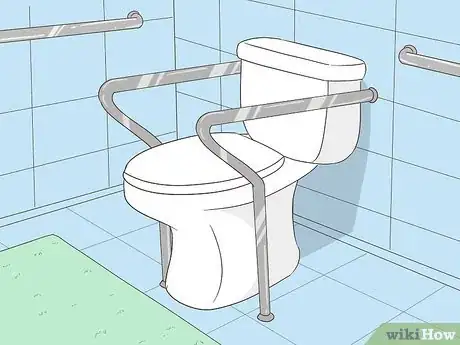
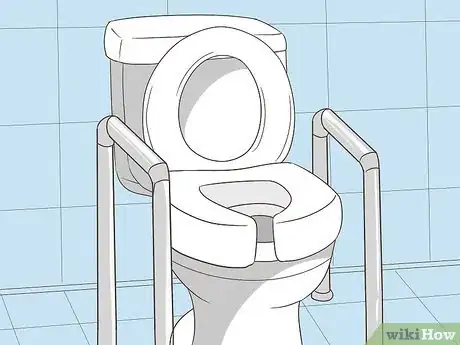
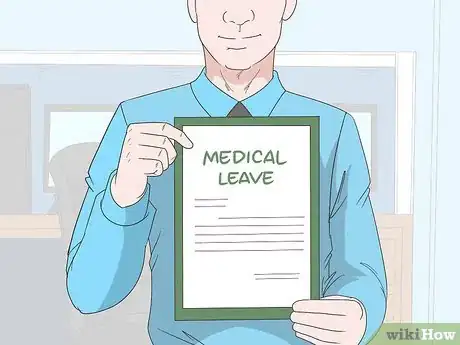

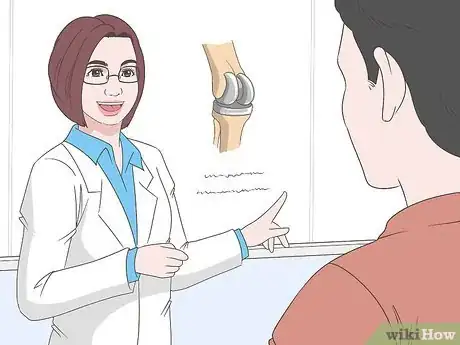
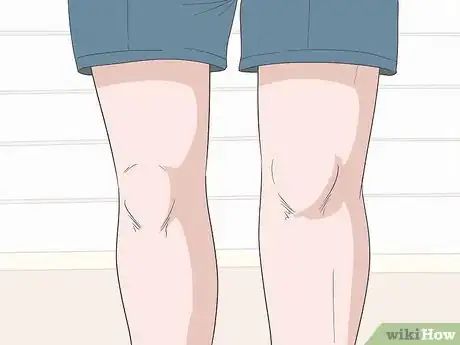


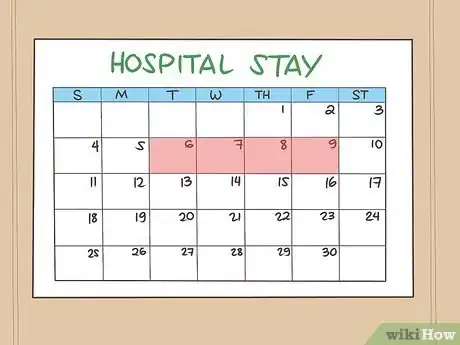

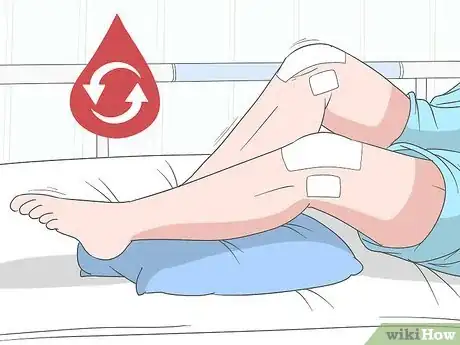
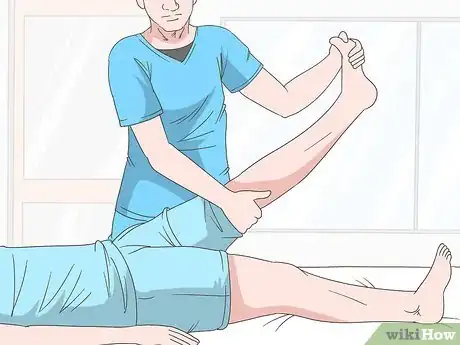

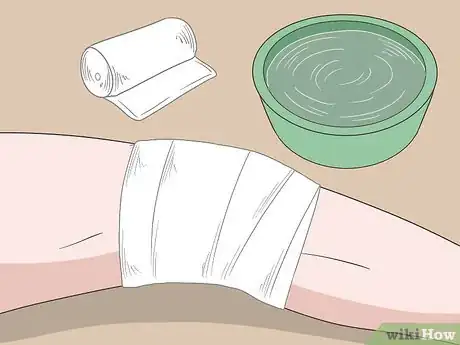
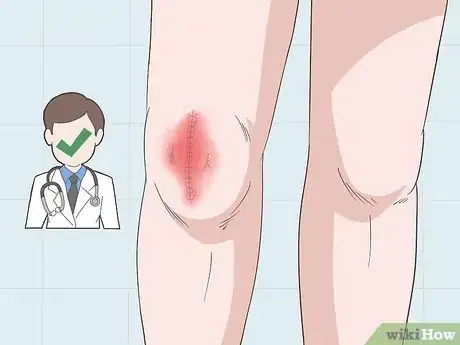



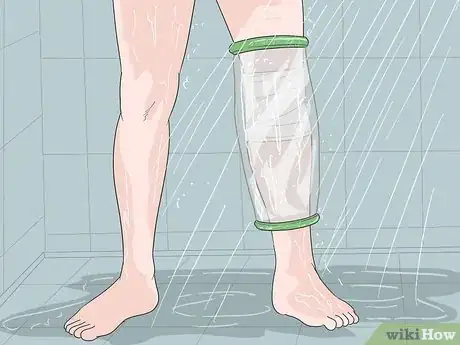







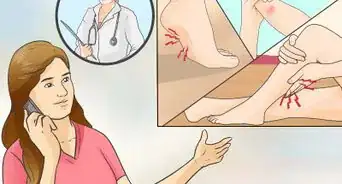

























































Medical Disclaimer
The content of this article is not intended to be a substitute for professional medical advice, examination, diagnosis, or treatment. You should always contact your doctor or other qualified healthcare professional before starting, changing, or stopping any kind of health treatment.
Read More...